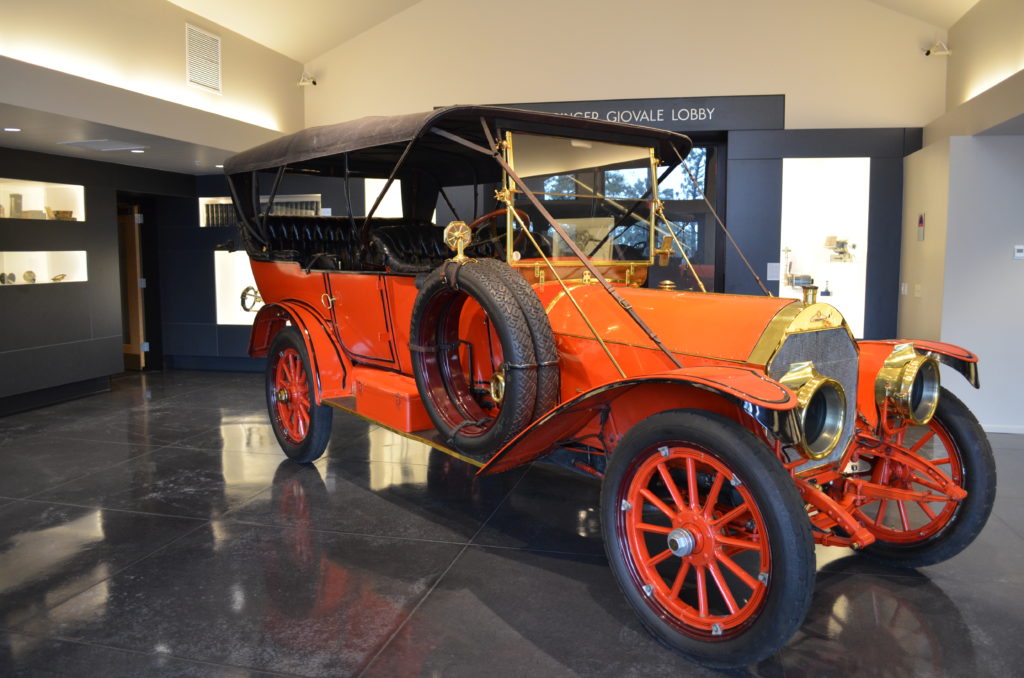
PRESS RELEASE
FOR IMMEDIATE RELEASE:
[vc_row][vc_column][vc_cta h2=”Feb 20, 2020 Update:”]As of February 2020, The Discovery Channel Telescope (DCT) is now known as the Lowell Discovery Telescope (LDT).[/vc_cta][/vc_column][/vc_row]
30 November 2016
***Contact details appear below***
Arizona-based Astronomers Characterize One of the Smallest Known Asteroids
A team of astronomers have obtained observations of the smallest asteroid –with a diameter of only two meters (six feet)—ever characterized in detail. The asteroid, named 2015 TC25, is also one of the brightest near-Earth asteroids ever discovered, reflecting 60 percent of the sunlight that falls on it.
Discovered by the University of Arizona’s Catalina Sky Survey last October, 2015 TC25 was studied extensively by a team led by Vishnu Reddy, an assistant professor at the University of Arizona’s Lunar and Planetary Laboratory. Other participating institutions include Lowell Observatory and Northern Arizona University. The team used four Earth-based telescopes for the study, published this month in The Astronomical Journal.
Reddy argues that new observations from the NASA Infrared Telescope Facility and Arecibo Planetary Radar show that 2015 TC25’s surface is similar to a rare type of highly reflective meteorite called aubrites. Aubrites consist of very bright minerals, mostly silicates, that formed in an oxygen-free, basaltic environment at very high temperatures. Only one out of every 1,000 meteorites that fall to Earth belong to this class.
“This is the first time we have optical, infrared, and radar data on such a small asteroid, which is essentially a meteoroid,” said Reddy. “You can think of it as a meteorite floating in space that hasn’t hit the atmosphere and made it to the ground—yet.”
“2015 TC25 is one of the five smallest Near-Earth Objects ever observed to measure rotation rate” says Audrey Thirouin from Lowell Observatory. Thanks to coordinated observations with Lowell’s 4.3-meter Discovery Channel Telescope, the NASA Infrared Telescope Facility, and the Magdalena Ridge Observatory 2.4-meter telescope, the team found that 2015 TC25 is a fast rotator with a rotational period of only 2.23 minutes and an irregular shape.
Small near-Earth asteroids such as 2015 TC25 are in the same size range as meteorites that fall to Earth. Astronomers discover them frequently, but not very much is known about them as they are difficult to characterize. By studying such objects in more detail, astronomers hope to better understand the parent bodies from which these meteorites originate.
Asteroids are remaining fragments from the formation of the solar system that mostly orbit the Sun between the orbits of Mars and Jupiter today. Near-Earth asteroids are a subset that cross Earth’s path. So far, more than 15,000 near-Earth asteroids have been discovered.
As far as the little asteroid’s origin is concerned, Reddy believes it likely was chipped off by another impacting rock from its parent, 44 Nysa, a main belt asteroid large enough to cover most of Los Angeles.
“Being able to observe small asteroids like this one is like looking at samples in space before they hit the atmosphere and make it to the ground,” Reddy say. “It also gives us a first look at their surfaces in pristine condition before they fall through the atmosphere.”
“It’s especially important to study the physical properties of small near‐Earth asteroids because of the threats these objects pose to us,” says Stephen Tegler, co‐author of the study and a professor in the Department of Physics and Astronomy at Northern Arizona University “The meteoroid that caused injuries and damage in Chelyabinsk, Russia in 2013 was less than 20 meters in diameter.”
Participating institutions/facilities in this project include the University of Hawaii/NASA IRTF, USRA/Arecibo Planetary Radar, New Mexico Institute of Mining and Technology/Magdalena Ridge Observatory, Northern Arizona University, and Lowell Observatory/Discovery Channel Telescope.
Reference:
“Physical Characterization of ~2-Meter Diameter Near-Earth Asteroid 2015 TC25: A Possible Boulder from E-type Asteroid (44) Nysa” by Vishnu Reddy et al, 2016, The Astronomical Journal [http://aj.aas.org, Paper: http://tinyurl.com/hhgrlm3].
Thirouin’s research on 2015 TC25 is funded by the Mission Accessible Near-Earth Objects Survey (MANOS) awarded by the NASA’s Near-Earth Object Observations program.
Media Contact
Kevin Schindler, Lowell Observatory
(928) 607-1387
Science Contact
Audrey Thirouin, Lowell Observatory
###
About Lowell Observatory
Lowell Observatory is a private, non-profit research institution founded in 1894 by Percival Lowell. The Observatory has been the site of many important discoveries including the detection of the large recessional velocities (redshift) of galaxies by Vesto Slipher in 1912-1914 (a result that led ultimately to the realization the universe is expanding), and the discovery of Pluto by Clyde Tombaugh in 1930. Today, Lowell’s 14 astronomers use ground-based telescopes around the world, telescopes in space, and NASA planetary spacecraft to conduct research in diverse areas of astronomy and planetary science. The Observatory welcomes about 80,000 visitors each year to its Mars Hill campus in Flagstaff, Arizona for a variety of tours, telescope viewing, and special programs. Lowell Observatory currently operates four research telescopes at its Anderson Mesa dark sky site east of Flagstaff and the 4.3-meter Discovery Channel Telescope near Happy Jack, Arizona.